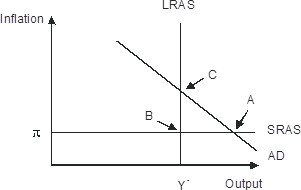Suppose the United States exports cars to France and imports cheese from Switzerland. This situation suggests that
a. the United States has a comparative advantage relative to Switzerland in producing cheese, and France has a comparative advantage relative to the United States in producing cars.
b. the United States has a comparative advantage relative to France in producing cars, and Switzerland has a comparative advantage relative to the United States in producing cheese.
c. the United States has an absolute advantage relative to Switzerland in producing cheese, and France has an absolute advantage relative to the United States in producing cars.
d. the United States has an absolute advantage relative to France in producing cars, and Switzerland has an absolute advantage relative to the United States in producing cheese.
B
You might also like to view...
If in the long run a firm makes zero profit, it should exit the industry
Indicate whether the statement is true or false
An optimal two-part tariff pricing schedule maximizes consumer surplus
Indicate whether the statement is true or false
Which of the following best describes a graph showing the supply and demand for foreign exchange?
a. The quantity of foreign exchange is on the horizontal axis and the quantity of the domestic currency is on the vertical axis. b. The quantity of the domestic currency is on the horizontal axis and the quantity of foreign exchange is on the vertical axis. c. The quantity of foreign exchange is on the horizontal axis and the price of foreign exchange in terms of the domestic currency is on the vertical axis. d. The quantity of foreign exchange is on the vertical axis and the price of foreign exchange in terms of the domestic currency is on the horizontal axis. e. The quantity of the domestic currency is on the horizontal axis and the price of foreign exchange in terms of dollars is on the vertical axis.
Refer to the figure below.________ inflation will eventually move the economy pictured in the diagram from short-run equilibrium at point ________ to long-run equilibrium at point ________, 
A. Rising; B; C B. Falling; A; C C. Falling; A; B D. Rising; A; C